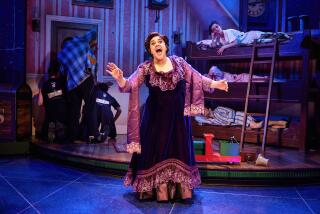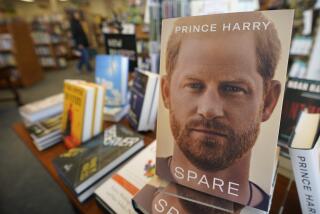Filling in the blanks on Peter Pan’s past
- Share via
NEW YORK -- It started with a question from Ridley Pearson’s daughter: “How did Peter meet Captain Hook in the first place?”
That question inspired others about J.M. Barrie’s “Peter Pan,” the captivating tale about a boy and his adventures in Neverland: Why doesn’t Peter get older? How did he learn to fly? Where did Tinker Bell come from?
Pearson, a bestselling suspense writer, set out to find the answers, teaming up with humor columnist Dave Barry to write a prequel trilogy to Peter Pan. The first book, “Peter and the Starcatchers,” was published in 2004. The adventure concludes with “Peter and the Secret of Rundoon,” out this month.
“When we started this, we never expected that we would end up with three books,” said Barry, 60. “We thought we would have one little book, a kids’ book.”
But they needed many, many pages to tell the tale behind the tale of the boy who never grows up, Pearson said. “We wrote this 500-page manuscript and we got as far as the creation of Tinker Bell, but we still didn’t answer a whole bunch of stuff,” said Pearson, 54. “So, in the second book, we dealt with the shadows, and in this third book, we’ve really tried to pull this all together in an action format.”
The first two books spent a combined 18 months on the New York Times Best Sellers list, and a Broadway version of “Peter and the Starcatchers” is being developed.
Although many U.S. children know the Disney version -- and Disney publishes these books -- they are not familiar with the Barrie story, which was first presented as a play in 1904.
With their different writing backgrounds, Pearson and Barry seem like an unlikely pair for collaboration on a fantasy book, a genre they say has ripened thanks to Harry Potter. The two met 15 years ago as members of the Rock Bottom Remainders, a band made up of famous authors. Neither had written a children’s book before.
“We give a lot of thanks to J.K. Rowling,” Barry said. “The idea that kids will actually read long books -- read a book because the story is fun, not because it teaches them or has some lesson in it. We try to have the good guys win and the bad guys lose, but that’s about as far as we go with preaching.”
The two say they work together outlining their books and then divide up the characters, each writing chapters based on who stars in them.
Pirate ships sailed on the stage at Morgan Stanley Children’s Hospital of New York-Presbyterian, where the two had a reading last week.
“It’s magical,” said Danielle Bennett, 8, about her love for Peter Pan.
“I like how he fights,” said fourth-grader Samantha Leon, “how brave he is, how careful he is when it comes to problems.”
Barry recalled seeing a kid reading his second book last year when he was dropping his daughter off at school.
“I go up to her, tapped her on the shoulder and said, ‘You know, I wrote that book,’ ” he said. “She goes, ‘Oh,’ and goes back to reading. She didn’t care at all that the author of the book was there. She wanted to go back to the story. In a way, that’s the best kind of reader. They live for your book.”
More to Read
Sign up for our Book Club newsletter
Get the latest news, events and more from the Los Angeles Times Book Club, and help us get L.A. reading and talking.
You may occasionally receive promotional content from the Los Angeles Times.






